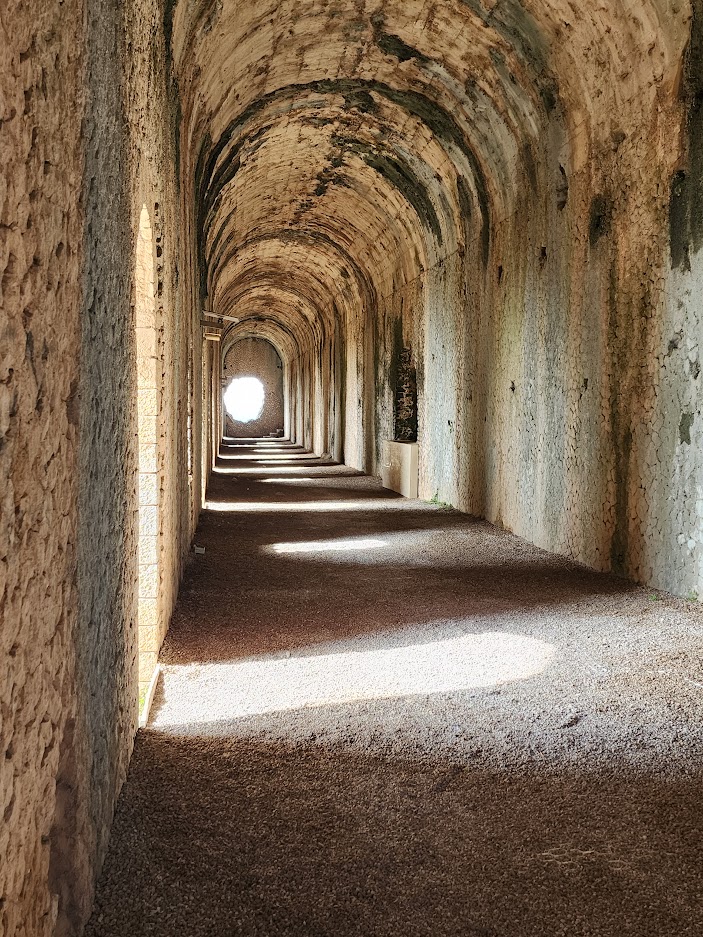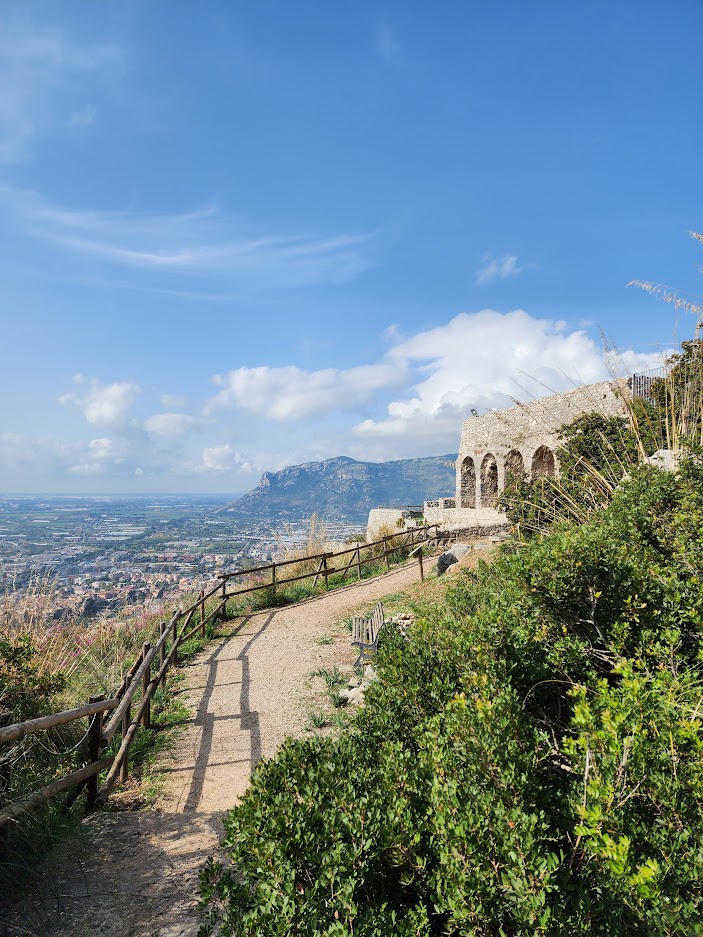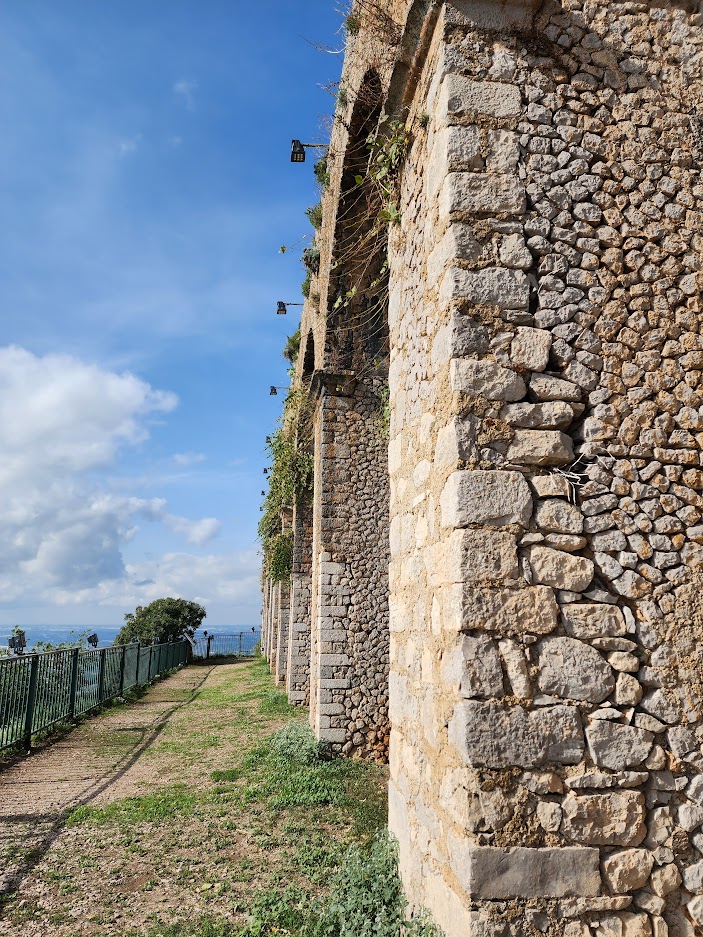
ROME – Italy has petitioned the United Nations Educational, Scientific and Cultural Organization (UNESCO) to recognize the Appian Way, Queen of Roads (Via Appia, Regina Viarum) as a World Heritage site.
Candidacy to a UNESCO World Heritage site will serve to preserve the “exceptional universal value for present and future generations” of the Appian Way, a site which “with its well-preserved infrastructural, archaeological, architectural, funerary and civil evidence represents a phenomenon not only of exceptional cultural importance but also geographical and political importance,” said the Italian Culture Ministry.
The candidacy began in May 2022. The completed application was submitted on January 10th and received scientific approvals from the Governing Council of the Italian UNESCO National Commission on January 20th.
“The candidacy of the Via Appia for UNESCO is the result of a great and coordinated work on the territories by the institutions,” said the council, “which, through its archaeological and artistic heritage, intends to bear witness to the millenary evolution of Italian civilization and of the cultural and economic relations between the Continent and the Mediterranean, between the West and the East”.
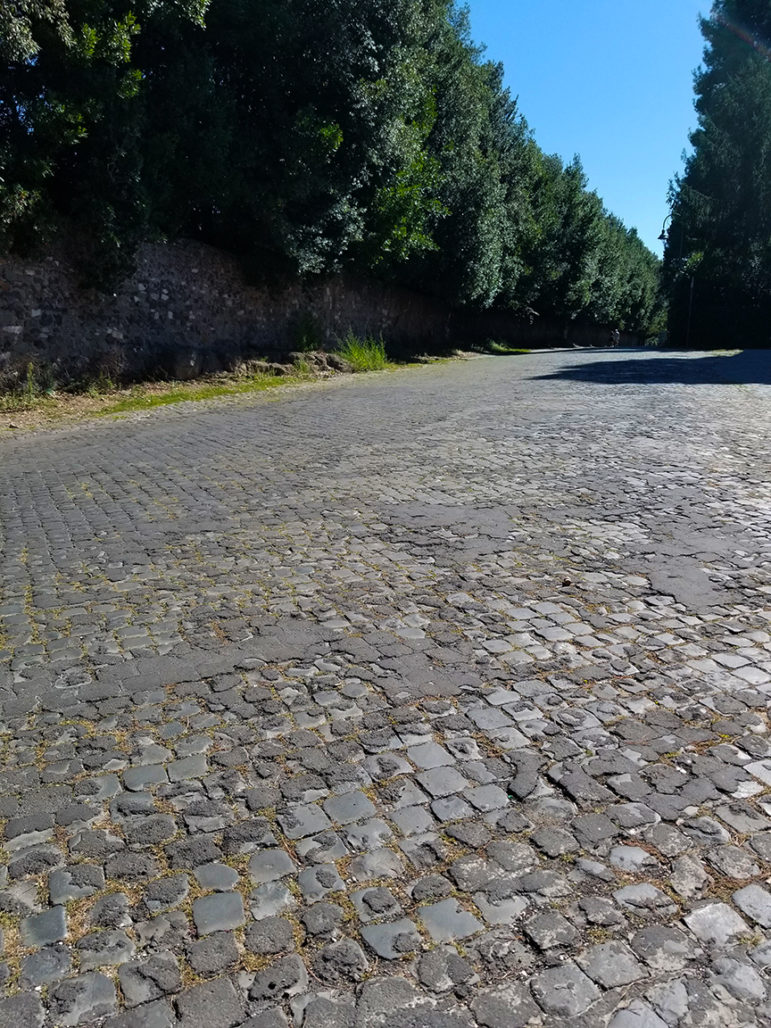
The Appian Way in Rome [Photo Credit: S. Ciotti]
The Appian Way is perhaps one of the most recognizable names in Western history. It is one of the earliest and most strategically and commercially important roads of the Ancient Roman Republic. It is often and rightly called Europe’s first expressway.
The Appian Way connected the city of Rome to the Alban Hills, southward to Terracina and the areas north of Naples, then splitting at Benevento south and eastward to Taranto and Bari then terminating in Brindisi. The road allowed Rome to extend control down the Italian Peninsula, crossing marshes and mountains, onto the Adriatic and Ionian Seas. By the Late Republic, Rome had extended throughout the Italian Peninsula, adding new roads as well as tributaries connecting to the Appian Way, leading to the expression “all roads lead to Rome.”
The full map is available through the UNESCO candidacy portal created by the Ministry.
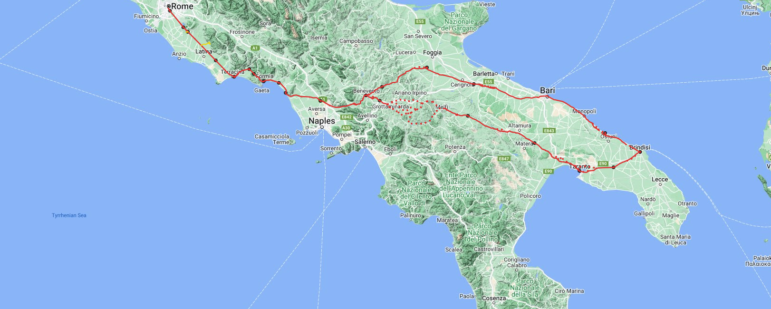
Map of Via Appia (Interactive map available in Italian and English) Courtesy: Italian Ministry of Culture
The beginning of the Appian Way has two major catacombs and numerous tombs, including the Mausoleum of Romulus, the Mausoleum of Cecilia Metella, and others, from Roman pagans to saints, martyrs, and early Christians who could not afford to be buried inside Rome. The slave leader Spartacus was crucified on the Appian Way. The road has monuments from all periods of Rome’s history.
The Appian Way also allowed citizens, pilgrims, and even emperors to reach ancient holy sites. The road allowed access to the nearby village of what is now Genzano di Roma, then called Cynthia Fanum and dedicated to the goddess Cynthia.
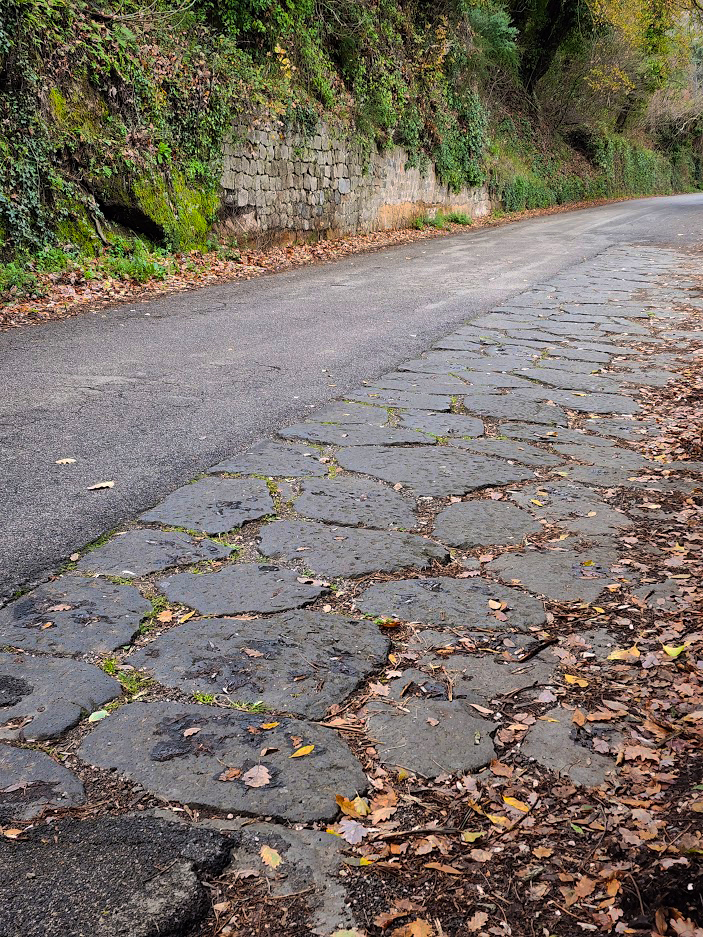
The remains of s Roman road off of the Appian Way from Genzano di Roma to the Sanctuary of Diana Nemorensis [Photo Credit: S. Ciotti]
Genzano borders the Nemus Aricinum which contains the holy woods and sanctuary of the goddess Diana as well as Lake Nemi, called the Mirror of Diana, and the site the emperor Caligula chose to build the famous Nemi Ships.
Another brief turn off the Appian Way goes to Lanuvium (now Lanuvio), a destination of prominent Roman politicians and the home of the Temple of Juno Sospita.
Further south, the Appian Way arrives in Terracina, the site of the Temple of Jupiter Anxur and a smaller temple to Venus Obsequens (Indulgent Venus). The site is an enormous complex on a promontory overlooking the Tyrrhenian Sea.
The road ends in Brindisi with stairs to the sea and columns. One column, crowned with dedications to Jupiter, Juno, Neptune, and Amphitrite, still stands.
The Appian Way was maintained and restored by Emperors Augustus, Vespasian, Trajan, and Hadrian. By Late Antiquity, after the fall of the western Roman Empire, the road became unused and fell into disrepair. But in the 18th Century, Pope Pius VI ordered a restoration effort, creating a new version called the Appia Nuova, the new Appian Way.
The Appian Way also witnessed later wars. At its terminus in Brindisi, it became a launching point of the Crusades. The road also saw battles during World War II during the Battle of Anzio. The allies attempted to use the road to take Rome while the Germans led a counteroffensive down it. Ultimately, the Allies prevailed and took Rome.
Extensive restoration of the Appian Way was done recently for the millennium celebration of the Catholic Church and its Great Jubilee.
The first 10 or so miles of the Appian Way have been preserved in Rome as part of a regional park.
Now, the Italian Ministry is seeking full recognition of the entire 900 km road complex from Rome to Brindisi. It has been joined in the proposal by four Italian regions (Lazio, Campania, Basilicata, and Puglia), 12 provinces and metropolitan cities, 73 municipalities, the Pontifical Commission for Sacred Archaeology, 15 parks, and 25 Italian and foreign universities.
The Ministry is seeking UNESCO recognition because of the Appian Way’s cultural importance in the development of the West. “It is precisely in this cultural aspect that we believe there is that element that the UNESCO candidacies require,” declared the Undersecretary for Culture Giancarlo Mazzi at the signing of the Memorandum of Understanding for the candidacy.”
As part of the preparation for application, the Ministry has invested €19 million (about USD $21.5 million) in conservation and restoration efforts. “As previous experiences have taught us,” Mazzi added, “these paths lead also a strong economic impact on the territory. I am convinced that we can do it because when the Italians play together, no result is impossible.”
The candidacy of the Appian Way moves forward to UNESCO. If approved, the Via Appia would be the 59th World Heritage site in Italy and the second longest site after the Great Wall of China.
The Wild Hunt is not responsible for links to external content.
To join a conversation on this post:
Visit our The Wild Hunt subreddit! Point your favorite browser to https://www.reddit.com/r/The_Wild_Hunt_News/, then click “JOIN”. Make sure to click the bell, too, to be notified of new articles posted to our subreddit.

